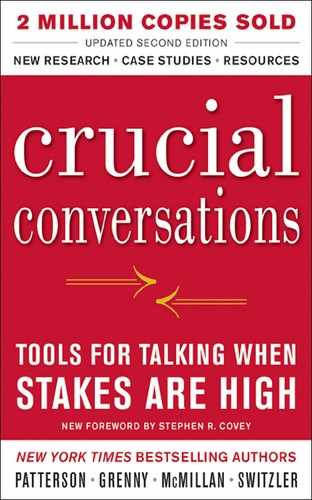MAKE ASSIGNMENTS—PUT DECISIONS INTO ACTION
Now let’s take a look at the final step. You’ve engaged in healthy dialogue, filled the pool of meaning, decided how you’re going to draw from the pool, and eventually come to some decisions. It’s time to do something. Some of the items may have been completely resolved during the discussion, but many may require a person or team to do something. You’ll have to make assignments.
As you might suspect, when you’re involved with two or more people, there’s a chance that there will be some confusion. To avoid common traps, make sure you consider the following four elements:
• Who?
• Does what?
• By when?
• How will you follow up?
Who?
To quote an English proverb, “Everybody’s business is nobody’s business.” If you don’t make an actual assignment to an actual person, there’s a good chance that nothing will ever come of all the work you’ve gone through to make a decision.
When it’s time to pass out assignments, remember, there is no “we.” “We,” when it comes to assignments, actually means, “not me.” It’s code. Even when individuals are not trying to duck an assignment, the term “we” can lead them to believe that others are taking on the responsibility.
Assign a name to every responsibility. This especially applies at home. If you’re divvying up household chores, be sure you’ve got a specific person to go with each chore. That is, if you assign two or three people to take on a task, appoint one of them the responsible party. Otherwise, any sense of responsibility will be lost in a flurry of finger-pointing later on.
Does What?
Be sure to spell out the exact deliverables you have in mind. The fuzzier the expectations, the higher the likelihood of disappointment. For example, the eccentric entrepreneur Howard Hughes once assigned a team of engineers to design and build the world’s first steam-powered car. When sharing his dream of a vehicle that could run on heated water, he gave them virtually no direction.
After several years of intense labor, the engineers successfully produced the first prototype by running dozens of pipes through the car’s body—thus solving the problem of where to put all the water required to run a steam-powered car. The vehicle was essentially a giant radiator.
When Hughes asked the engineers what would happen if the car got into a wreck, they nervously explained that the passengers would be boiled alive, much like lobsters in a pot. Hughes was so upset in what the crew came up with that he insisted they cut it up into pieces no larger than three inches. That was the end of the project.
Learn from Hughes. When you’re first agreeing on an assignment, clarify up front the exact details of what you want. Couples get into trouble in this area when one of the parties doesn’t want to take the time to think carefully about the “deliverables” and then later on becomes upset because his or her unstated desires weren’t met. Have you ever remodeled a room with a loved one? Then you know what we’re talking about. Better to spend the time up front clarifying exactly what you want rather than waste resources and hurt feelings on the back end.
To help clarify deliverables, use Contrasting. If you’ve seen people misunderstand an assignment in the past, explain the common mistake as an example of what you don’t want. If possible, point to physical examples. Rather than talk in the abstract, bring a prototype or sample. We learned this particular trick when hiring a set designer. The renowned designer talked about what he would deliver, and it sounded great to us. Twenty-five thousand dollars later he delivered something that would never work. We had to start over from scratch. From that day on we’ve learned to point to pictures and talk about what we want and don’t want. The clearer the picture of the deliverable, the less likely you’ll be unpleasantly surprised.
By When?
It’s shocking how often people leave this element out of an assignment. Instead of giving a deadline, people simply point to the setting sun of “someday.” With vague or unspoken deadlines, other urgencies come up, and the assignment finds its way to the bottom of the pile, where it is soon forgotten. Assignments without deadlines are far better at producing guilt than stimulating action. Goals without deadlines aren’t goals; they’re merely directions.
How Will You Follow Up?
Always agree on how often and by what method you’ll follow up on the assignment. It could be a simple e-mail confirming the completion of a project. It might be a full report in a team or family meeting. More often than not, it comes down to progress checks along the way.
It’s actually fairly easy to build follow-up methods into the assignment. For example: “Call me on my cell phone when you finish your homework. Then you can go play with friends. Okay?”
Or perhaps you’ll prefer to rely on milestones: “Let me know when you’ve completed your library research. Then we’ll sit down and look at the next steps.” Milestones, of course, must be linked to a drop-dead date. “Let me know as soon you’ve completed the research component of this project. You’ve got until the last week in November, but if you finish earlier, give me a call.”
Remember, if you want people to feel accountable, you must give them an opportunity to account. Build an expectation for follow-up into every assignment.
